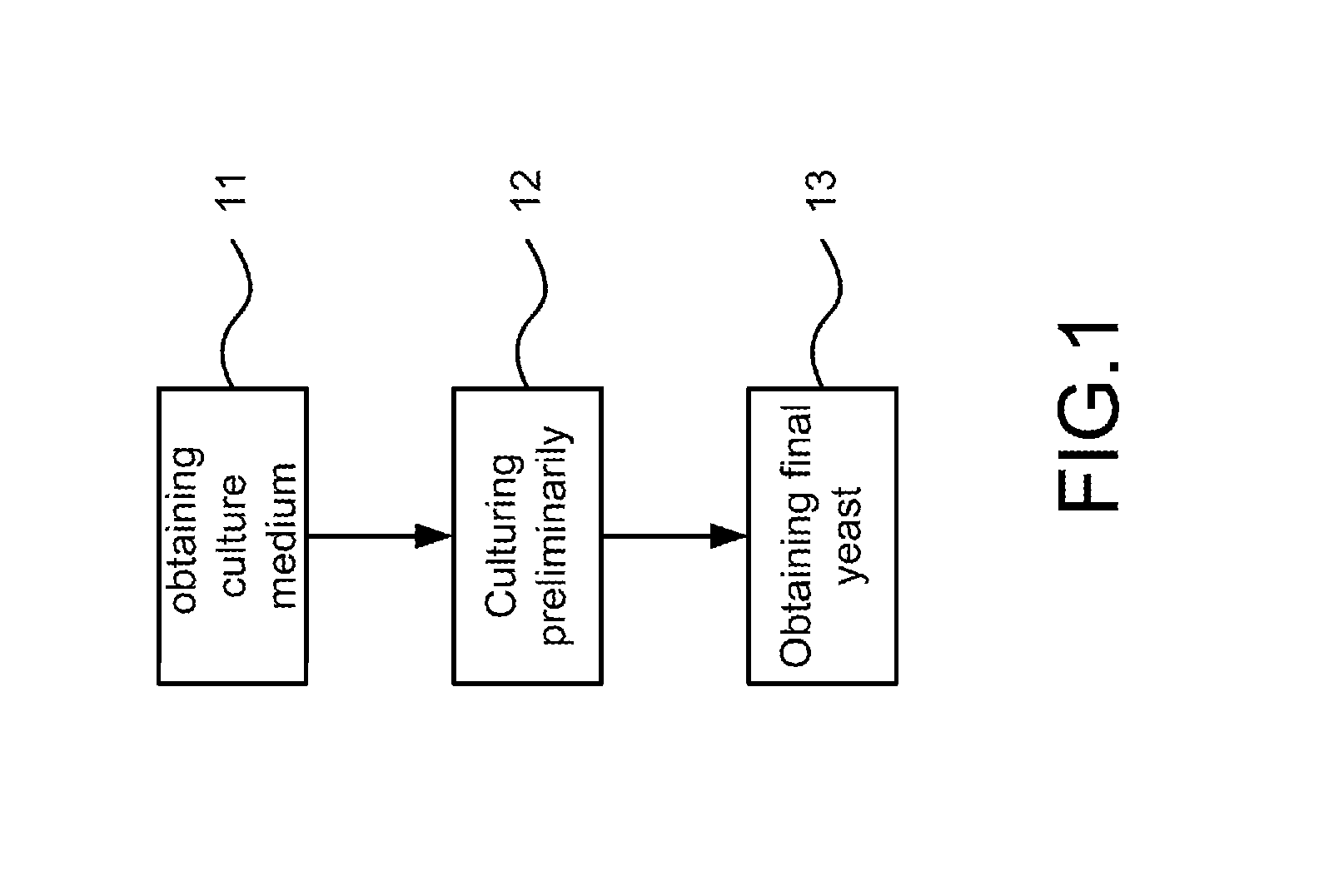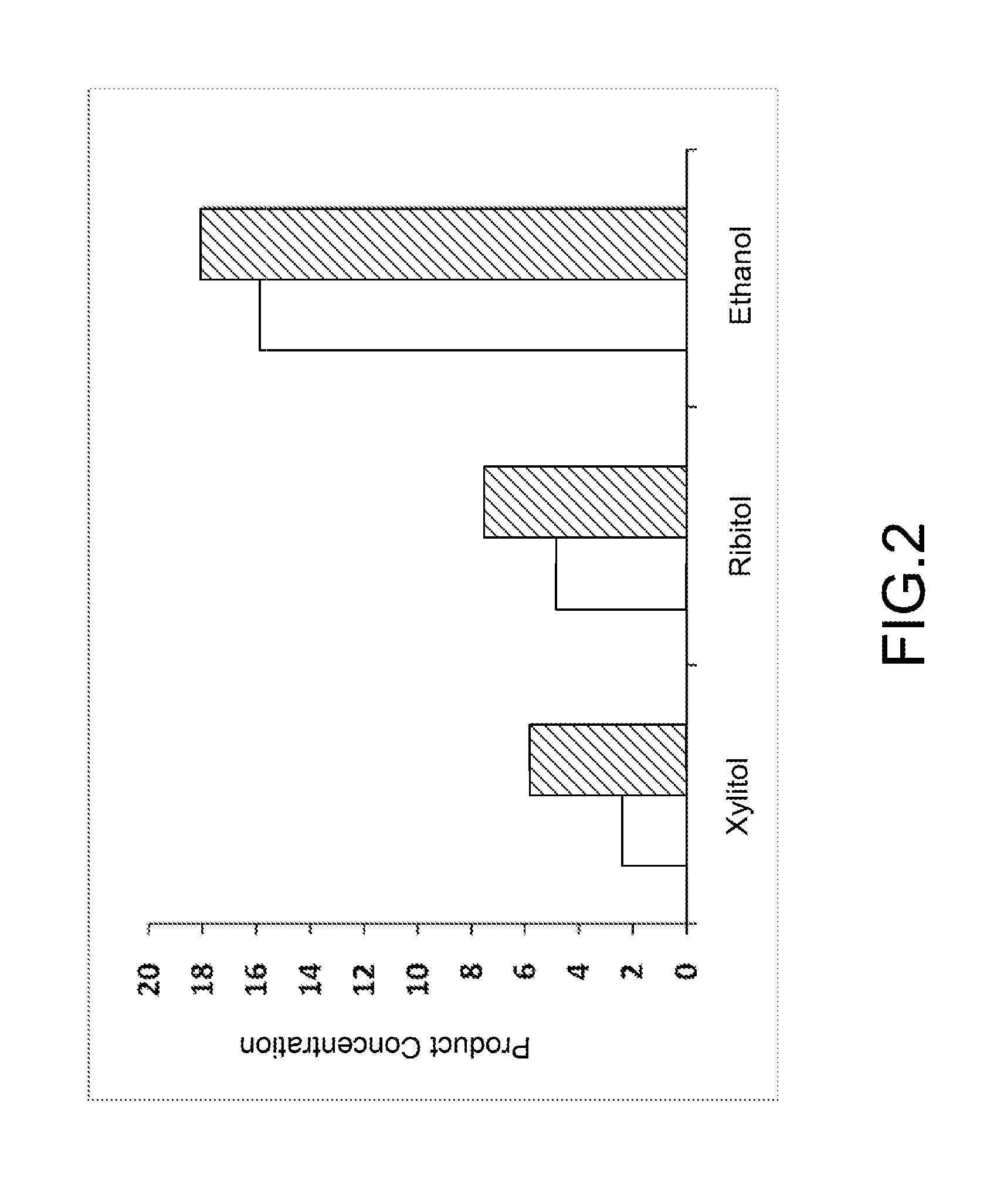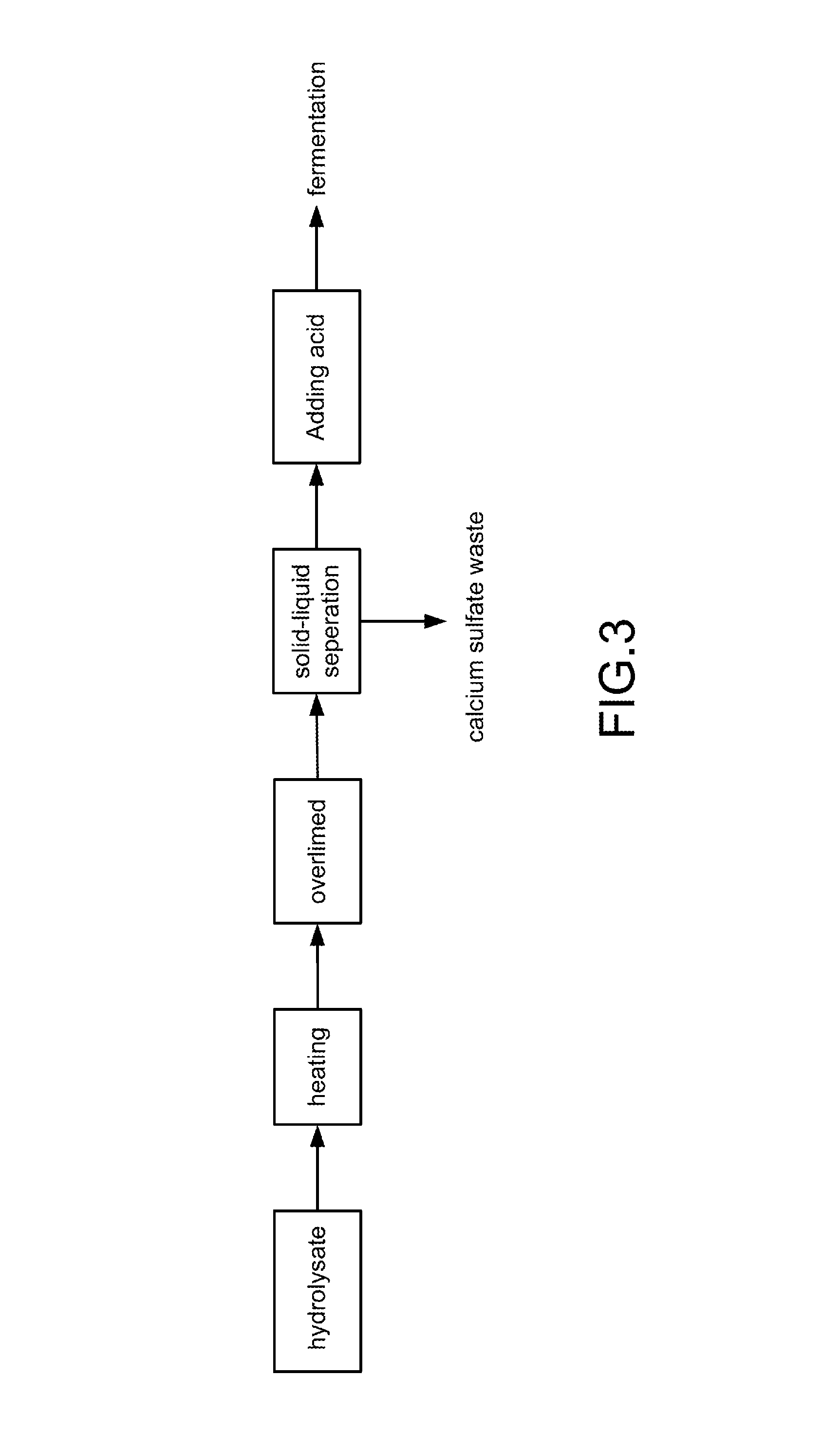Method of cultivating yeast for enhancing pentitol production
a technology of pentitol and cultivation method, which is applied in the field of cultivating yeast, can solve the problems of uncompetitiveness in the market place, affecting the ability of yeast to transform xylose into ethanol, and production loss, and achieves the effect of enhancing the production yield of pentitol
- Summary
- Abstract
- Description
- Claims
- Application Information
AI Technical Summary
Benefits of technology
Problems solved by technology
Method used
Image
Examples
Embodiment Construction
[0022]The following description of the preferred embodiments is provided to understand the features and the structures of the present disclosure.
[0023]Please refer to FIG. 1, which is a flow view showing a preferred embodiment according to the present disclosure. As shown in the figure, the present disclosure is a method of cultivating yeast for enhancing pentitol production, comprising the following steps:
[0024](a) Obtaining adaptation medium 11: Acetic acid is added into a lignocellulosic hydrolysate. The lignocellulosic hydrolysate is a xylose-rich solution and is neutralized with an alkali agent like NaOH to make the hydrolysate become weakly acidic (pH5.0). Then the hydrolysate is mixed with a synthetic xylose medium to obtain a yeast adaptation medium, where the synthetic xylose medium has a final volume ratio of 20% in the adaptation medium. Therein, the adaptation medium has an initial xylose concentration of 40 grams per liter (g / L) and an acetic acid concentration of 2.5 g...
PUM
| Property | Measurement | Unit |
|---|---|---|
| pH | aaaaa | aaaaa |
| concentration | aaaaa | aaaaa |
| concentration | aaaaa | aaaaa |
Abstract
Description
Claims
Application Information
 Login to View More
Login to View More - R&D
- Intellectual Property
- Life Sciences
- Materials
- Tech Scout
- Unparalleled Data Quality
- Higher Quality Content
- 60% Fewer Hallucinations
Browse by: Latest US Patents, China's latest patents, Technical Efficacy Thesaurus, Application Domain, Technology Topic, Popular Technical Reports.
© 2025 PatSnap. All rights reserved.Legal|Privacy policy|Modern Slavery Act Transparency Statement|Sitemap|About US| Contact US: help@patsnap.com



